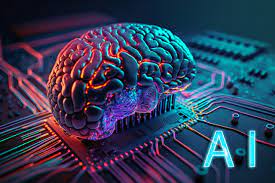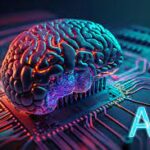
Artificial Intelligence (AI) refers to the simulation of human intelligence processes by machines, especially computer systems. These processes include learning (the acquisition of information and rules for using the information), reasoning (using rules to reach conclusions or make decisions), problem-solving (finding solutions to complex problems), perception (sensing and interpreting the environment), and language understanding (interpreting and generating human language).AI can be described as a branch of computer science that aims to create intelligent machines capable of performing tasks that typically require human intelligence. This includes various subfields and techniques within AI, such as machine learning, deep learning, natural language processing, computer vision, robotics, expert systems, and more
Learning
AI systems can learn from data, experience, and feedback to improve their performance over time. Machine learning algorithms enable machines to recognize patterns, make predictions, and adapt to new information without explicit programming
Reasoning and Decision Making
AI systems can use logical reasoning, probabilistic reasoning, and decision-making algorithms to analyze information, infer relationships, evaluate options, and make decisions or recommendations based on available data and rules.
Problem Solving
AI techniques such as search algorithms, optimization algorithms, and constraint satisfaction methods enable machines to solve complex problems, formulate strategies, and find optimal solutions in various domains
Perception
AI systems can perceive and interpret the world through sensors, cameras, microphones, and other input devices. Computer vision and speech recognition technologies allow machines to understand visual and auditory
Natural Language Processing (NLP)
AI can understand, generate, and interact with human language using NLP techniques such as sentiment analysis, text classification, machine translation, speech synthesis, and conversational AI (chatbots, virtual assistants)
Automation
AI enables automation of tasks and processes across industries, ranging from robotic process automation (RPA) for repetitive tasks to autonomous systems in transportation, manufacturing, healthcare, and other domains
Adaptability and Creativity
AI systems can adapt to changing environments, learn new tasks, generate creative solutions, and innovate through techniques like generative adversarial networks (GANs), reinforcement learning, and evolutionary algorithms.
Overall, AI represents a wide range of technologies and applications that aim to replicate or augment human intelligence in various domains. It has the potential to revolutionize industries, improve efficiency, solve complex problems, enhance decision-making, and drive innovation in areas such as healthcare, finance, education, transportation, entertainment, and more. However, ethical considerations, transparency, accountability, and responsible AI practices are also important aspects to consider in the development and deployment of AI system
Critical Infrastructure:
Industries such as energy, transportation, water supply, telecommunications, and manufacturing rely on critical infrastructure that is vulnerable to cyber threats. Cybersecurity for critical infrastructure involves protecting control systems, SCADA (Supervisory Control and Data Acquisition) systems, industrial IoT devices, smart grids, transportation networks, and ensuring continuity of essential services in the face of cyber attacks

Top 10 multinational companies (MNCs) for Front End...




